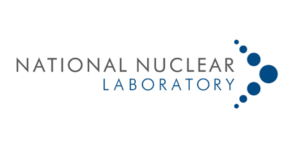Tuesday 30 November 2021
Inspiring the next generation of nuclear scientists across Cumbria
By Dr Fiona Rayment, Chief Science and Technology Officer at National Nuclear Laboratory (NNL)
Following recent discussions at COP26, solutions for the climate crisis are something that governments across the globe are urgently looking into. Nuclear technologies play an important role in the UK Government’s strategies for decarbonisation and a thriving nuclear sector is an essential component of our nation’s path to net zero.
In Cumbria, we have a long, proud nuclear heritage. NNL, the UK’s national laboratory for nuclear fission, has 600 employees in the region who work across three of our world-leading laboratories to drive innovations in clean energy and help ensure the UK can reach its net zero goals on time and affordably. In order to retain these unparalleled skills and experience, we need to be sparking thoughts, ideas and conversations around nuclear science and technology amongst our young people.
As part of this, in November I had the opportunity to visit Dearham Primary School in Maryport alongside my colleague Dr Rob Whittleston. There, we spoke to over 100 Year 6 pupils from across Arlecdon, Dearham, Flimby and Thornhill primary schools all about nuclear and how it is helping to transform both the environment and people’s lives. I am particularly delighted that we were able to showcase to the pupils just how integral their local people and communities are in making our world a cleaner, greener place.
It was fantastic to interact with so many young people and see how interested they were to learn about the work our experts are doing to help solve of the world’s biggest challenges – from achieving deep decarbonisation to delivering lifesaving healthcare. They engaged so wholeheartedly with the activities and experiments we delivered, from a special multiple-choice nuclear quiz to a fun chain reaction race to demonstrate nuclear fission.
When I was around the children’s age in the 1970s, I remember having to do my homework by candlelight because the power cuts at the time meant we didn’t have electricity at home. Likewise, for three days out of the week I had to study at home because there wasn’t enough heat to keep my school building warm. It was because of that that I became interested in energy and went on to study nuclear science.
In recent months, the UK has experienced contemporary difficulties with its energy supply. I’m sure this will have encouraged many of our young people to think, as I once did, about what they can do to help. It is so important therefore that those in the nuclear sector are going into schools, colleges and universities to bring to life everything that’s going on in the space and show our children and young people how they too can make a positive impact.
At the end of our visit, we launched a poster competition for the Year 6 pupils across all four academies, challenging them to work in pairs to design a poster about nuclear science. The winners in each class will receive special science kits. Whether it encourages the children to think about how nuclear generates clean electricity or Cumbria’s contribution to the nuclear sector, this is exactly the kind of activity we want to be engaging our young people in. I know all of us at NNL are very much looking forward to seeing what our budding scientists and technical experts of tomorrow are able to create.

